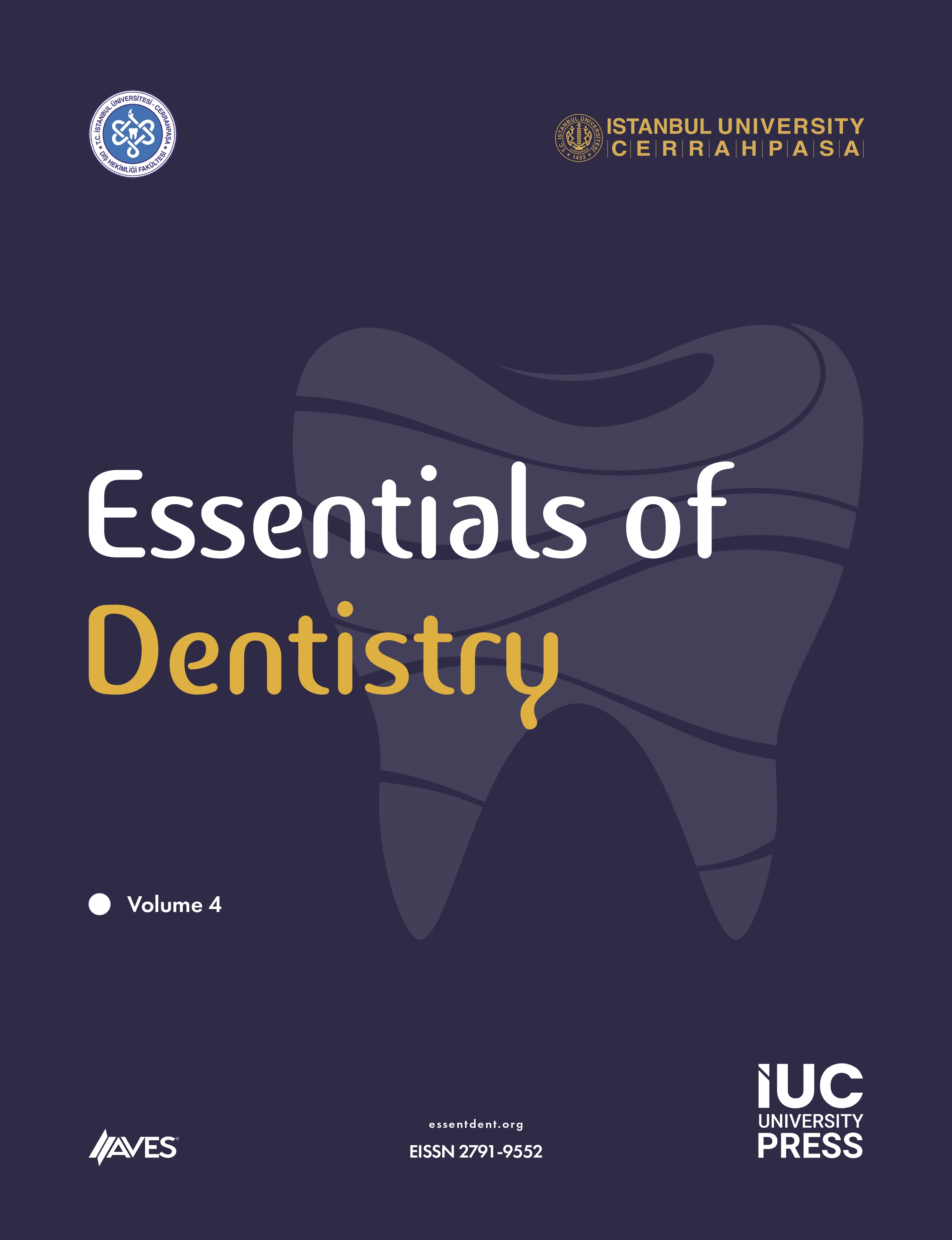Objective: This study aimed to compare the shear bond strength (SBS) values of resin nanoceramics repaired with 3 different single-shade resin composites.
Methods: Resin nanoceramic Cerasmart blocks were sliced, and rectangular-shaped specimens (14 × 12 × 1 mm; N=40) were obtained. Based on the resin composites (Omnichroma, Charisma Diamond, and Vittra APS UNIQUE) and control group (Ceram. X sphereTEC one), the specimens were split into three experimental groups. The repair procedure was performed after the surface treatments. Shear bond strength values were measured at 2 different times, and failure modes were determined.
Results: ”Main effect” is a statistical term that describes the effect of the composite independent of the groups. The main effect of time was statistically significant with regard to the SBS mean values (P < .001), as revealed by the 2-way analysis of variance test. Adhesive failure was the most common failure mode, with failure mode values for each composite and time.
Conclusion: Despite a limited number of studies comparing the SBS of various resin composites to resin nanoceramic, key findings suggest: that the SBS of resin composites is influenced by their structural compositions and monomer types, impacting mechanical properties over time; SBS and failure mode are affected by the adhesive type, technique, composition, and substrate surface treatment; and there exists an inverse relationship between time and bond strength, with SBS decreasing over time.
Cite this article as: Degirmenci A, Alrefai M, Pehlivan IE. Shear bond strength of resin nanoceramic repairing with various single-shade resin composites. Essent Dent. 2023;2(3):101-107.






